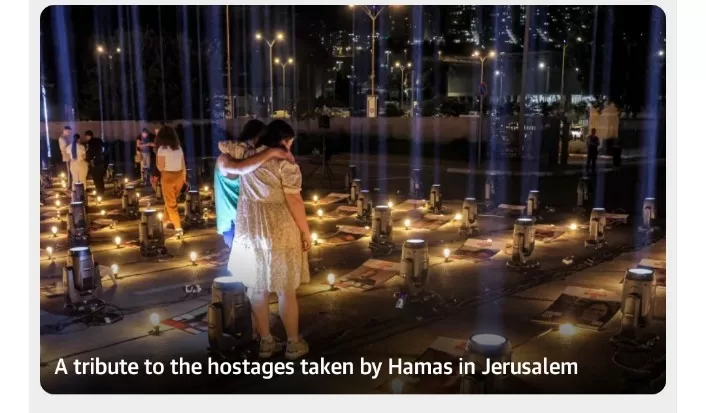The US military has executed strategic airstrikes on two specific locations within eastern Syria that are known to have affiliations with Iran’s Revolutionary Guard Corps (IRGC). This marks a notable shift, demonstrating Washington’s heightened willingness to actively engage its military assets in the turbulent Middle East scenario.
These precision strikes, officially declared by the Pentagon, targeted a well-identified weapons storage facility and an ammunition storage facility. These facilities were being used by the IRGC and the militias under its influence. This operation comes at a time when apprehensions are on the rise that the ongoing conflict between Israel and Hamas may transition into a larger regional conflagration.
Over the past ten days, US installations in both Iraq and Syria have experienced a series of calculated, yet disruptive, attacks. These attacks, which employed drones and rocket strikes, have been claimed by militias with ties to Iran.
Notably, these attacks resulted in the injury of at least 24 US service members, and tragically, the loss of a civilian contractor’s life. As if to underscore the seriousness of the situation, three similar attacks took place on Thursday, affecting two US bases in Syria and one in western Iraq.
Experts have weighed in, asserting that Washington’s patience has its limits, and the current administration under President Joe Biden is now inclined to employ a stronger stance to deter any further aggression, despite the accompanying risk of escalation. In a proactive measure, President Biden has authorized the deployment of two aircraft carriers to the eastern Mediterranean and the dispatch of fresh anti-missile units, accompanied by hundreds of troops, with the mission to safeguard US installations and support regional allies.
The response to these provocations was swift and precise. The US conducted retaliatory strikes employing two F-16 fighter jets, commencing at approximately 4:30 AM on a Friday near Abu Kamal. This Syrian town, located on the border with Iraq, hosts a significant US base, which has unfortunately become the focal point of several recent attacks initiated by Iran-backed militia. At present, it remains uncertain if Iranian nationals were among the casualties.
Lloyd Austin, the Secretary of Defense, characterized these strikes as “self-defense measures.” He elucidated that President Biden, in taking this action, had a clear intent to convey that the United States will not tolerate such attacks and will staunchly safeguard its interests, personnel, and national security.
Crucially, it was emphasized that these airstrikes were not coordinated with Israel. Secretary Austin underscored that the operation was conducted independently of Israel’s ongoing conflict with Hamas. Furthermore, the official statement included an urgent appeal to both state and non-state entities to refrain from actions that could potentially escalate into a more extensive regional conflict.
Adding to the complexity of the situation, a US warship intercepted missiles fired by Iran-backed Houthi rebels in Yemen just a week ago, raising further concerns. These missiles might have been intended for Israel.
Attribution of the recent attacks on US assets primarily points to groups either under the direct control of Tehran or closely aligned with other factions engaged in hostilities against Israel. On Thursday, a US base in Kharab al-Jir, Syria, suffered its second attack within a span of two days. Additionally, a base in western Iraq also faced a similar onslaught.
Iran’s Foreign Minister, Hossein Amir-Abdollahian, voiced a warning at the UN, asserting that if Israel’s military offensive against Hamas persisted, the United States would not be spared from the repercussions.
An astute observation by Charles Lister, the Director of Syria and Countering Terrorism and Extremism Programs at the Middle East Institute in Washington, highlights that these attacks underscore Iran’s intricate network of well-armed, highly coordinated proxies operating across the region. Such a network has been meticulously established to prepare for precisely this kind of scenario.
Lister also notes that Iran is currently testing the limits but is exercising restraint. The aim is to place the responsibility on the United States to respond, navigating the fine line between deterring further aggression and avoiding the instigation of a larger regional conflict.
Moreover, an Iraq-based group with Iranian support, which is believed to be a front for the well-established Kata’ib Hezbollah, issued a statement last week, threatening attacks on US military bases in the United Arab Emirates and Kuwait. Paramilitary forces linked to Iranian-controlled militias in Syria have been strategically positioned in proximity to the Golan Heights, further escalating tensions in the region.
In a noteworthy development, officials from the three principal Islamist extremist groups currently engaged in hostilities against Israel convened in Beirut to discuss the ongoing conflict. The leaders of Hezbollah, Hamas, and Palestine Islamic Jihad, along with other Iran-backed militants, expressed their shared objective: to secure a decisive victory for the resistance movement in Gaza and the West Bank and, in doing so, halt Israel’s “treacherous and brutal aggression” against the Palestinian people.
Tobias Borck, a senior research fellow specializing in Middle East security studies at London’s Royal United Services Institute, stressed that Iran’s actions represent a high-stakes gamble. The situation represents an escalation beyond the Gaza conflict’s usual bounds. It is a carefully calibrated demonstration of solidarity by Iran, illustrating that they acknowledge the presence of American aircraft carriers but remain undeterred and assert their capability to inflict harm. The inherent dangers are profound and wide-ranging, as Borck underlines.
Earlier in the week, President Biden conveyed an uncommon message to Iran’s Supreme Leader, Ayatollah Ali Khamenei. In the message, Tehran was explicitly warned against targeting US personnel in the Middle East, according to the White House.
As governments in the West and the Middle East watch the events unfold, there is mounting concern that Israel’s ongoing bombardment of Gaza, or the potential initiation of a ground invasion, could inadvertently spark a broader regional conflict.
On Thursday, Israeli authorities announced that they were entering the “next stages of the war,” following a substantial yet controlled raid on Gaza. This raid, described as a probing action, is considered a preparatory step for a more sustained ground offensive.
The ramifications of these developments have been substantial. Israel has imposed a stringent blockade on the densely populated Gaza Strip following Hamas’ attack on Israeli communities on October 7. Subsequently, Israel launched a relentless series of airstrikes, resulting in casualties including over 1,400 fatalities, with a substantial portion comprising children. The situation has become dire, with over 200 hostages, including infants and elderly individuals, being held.
The Gaza health ministry, under Hamas’ control, reported on Thursday that more than 7,000 Palestinians have been killed in retaliatory airstrikes, including nearly 3,000 children.
Satellite imagery, released on the same day by Maxar Technologies and Planet Labs, unveils a sobering landscape. Vast areas of the coastal enclave lay in ruin, with buildings reduced to rubble, and a bleak ash covering the land.
Leaders of the 27 European Union member states have unanimously advocated for the establishment of “humanitarian corridors and pauses” in Gaza. These would allow for the delivery of essential supplies, including food, water, and medical assistance to those in need.
The prospect of establishing humanitarian pauses or ceasefire agreements in the Hamas-controlled Gaza Strip is poised for discussion within the 193-member UN General Assembly on Friday. A draft resolution, submitted by Arab states, calls for an immediate ceasefire. Significantly, in the General Assembly, unlike the Security






